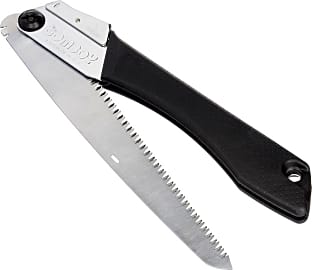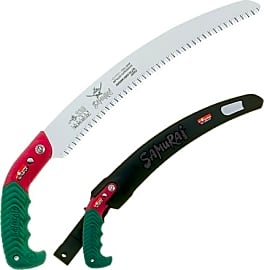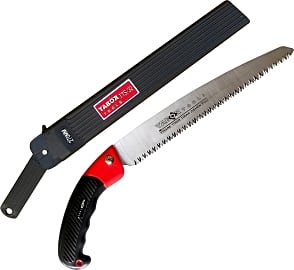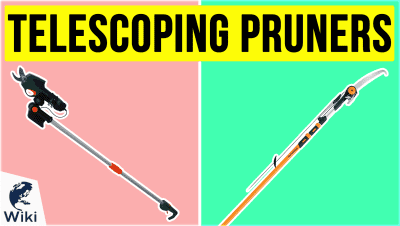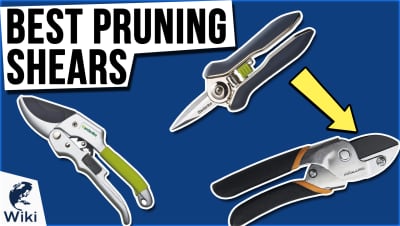The 10 Best Pruning Saws

This wiki has been updated 42 times since it was first published in October of 2015. Ideal for trimming dead or wayward branches and bushes, our selection of pruning saws includes a range of sizes and styles to choose from. We've selected compact models for hikers and campers to clear a path, larger tools for removing tree limbs, and pole-mounted versions for accessing hard to reach areas. As always, be sure to observe the recommended safety precautions. When users buy our independently chosen editorial selections, we may earn commissions to help fund the Wiki.
Editor's Notes
March 29, 2021:
It wasn’t an especially riveting round of updates for us, with all of our previous picks still presenting as great choices, but we wound up making a couple of small changes, nonetheless.
We noticed that the 20-foot version of the Silky Hayate wasn’t available at the time of this writing, but the 16-foot, equivalent telescoping pruner was, so – believing that this smaller size is not only more affordable, but likely also a better fit for more of our users – we decided to go ahead and substitute this slighter option of the same name. Just be aware, if 16 feet isn’t cutting it for you, that a 20-foot version is out there, and may still be available.
We also switched out the Corona RS 7265D for a new model from the company: the Corona RS16150. As best as we can tell, the biggest differences between the new and the old come down to cosmetics. But, because the new option was offered at a more affordable price (and since we tend to have a hard time saying no to a fresh new look), we thought it made sense to bring this option up to speed.
If the long-handled manual models on this list look like they might be more trouble than you’re interested in, then you may prefer one of the electric options found on our list pole saws. And, if the corded rankings there aren’t doing it for you, then maybe you’ll do better with our specialized list of cordless pole saws.
March 10, 2020:
For this update, we added a second pole-mounted option, the Silky Hayate. This extendable saw is a great alternative for users who want something a bit more versatile than our 12-foot Fiskars Extendable. The Silky Hayate does have a hefty price tag, but for serious tasks like 20-foot tree trimming, you don’t want to risk having a cheap shaft break, or tire yourself out using low-quality blades. Its oval-shaped pole is an interesting feature, designed to allow for precise blade adjustments from the ground.
We also decided to remove the EverSaw All Purpose from our list. Though still a great product, its features overlapped with other existing options, making it a bit redundant.
It’s extremely important to follow proper safety precautions when operating any of these saws, so make sure to review the user manual before use. Extendable pruning saws are especially dangerous, and are capable of causing serious injury when users lose control and drop them.
If these tools seem too heavy-duty for your needs, maybe a pair of pruning shears or hedge shears are what you’re looking for.
Special Honors
Toro Chainsaws This company has long been a trusted name when it comes to yard care, and their cordless, electric chainsaws are likely to make quick work of most pruning projects. They're powered by lithium-ion batteries, with 40- and 60-volt options available. toro.com
Black + Decker Electric Handsaw As impressive as some of the manual models in this category may be, going to work armed with nothing but a sharp blade and elbow grease can often be a drag, especially when you've got big branches to contend with. This corded tool from Black + Decker presents one viable alternative to gratuitous sweat and repetitive-stress injuries, and it's backed by a two-year warranty. At less than six pounds, many users will be able to manage it with one hand. blackanddecker.com
Choosing The Best Pruning Saw
This is not an issue with modern folding saws, however, so there is no reason not to choose one if you are short on storage space.
There are a few crucial considerations to make before purchasing a pruning saw. The most important thing to consider when choosing the best pruning saw is the amount and type of use it will get. Professionals looking to regularly cut branches from their orchard may want a larger saw the use of which involves their entire body. Models such as these can help to reduce the risk of repetitive motion injuries over time. On the other hand, the average gardener cutting an overgrown bramble once a year will often choose a much simpler option. A small and compact saw may be the best for them, as it will allow them to get in between branches with ease and reduce the chance of injuring themselves.
Some people are also wary of purchasing a folding saw. Folding saws came about rather late in the history of the hand saw, and early models were prone to collapsing under stress, leading to injury if the teeth of the saw were near the user's body. This is not an issue with modern folding saws, however, so there is no reason not to choose one if you are short on storage space. Modern folding saws feature intricate safety locks, spring-loaded blades, and a strong construction designed to withstand stress much better than early saws. Despite this, some gardeners will choose non-folding saws, either out of superstition or due to the security that a design with no moving parts offers.
Users that do choose folding saws usually do so for their practicality, ease of storage, and added safety. You can easily store a folding saw in many places that cannot accommodate a standard saw, without the risk of damaging anything nearby or accidentally bumping into the blade. This can reduce the risk of minor cuts while reaching for another tool in the gardening shed. The intended use of the saw will also make a difference in which model is the best choice. Some tools are specifically designed for use with hard woods, while others are for general purpose pruning. Understanding your personal needs will help you make the correct decision about which pruning saw to choose.
The Benefits Of Using A Pruning Saw
Pruning saws are necessary tools in the arsenal of anyone with trees or shrubs to care for. They cover a very important middle ground of tree and shrub management. Pruning saws are perfect for branches that are too big for pruning shears or ratchet loppers, which are the desired tools for most small pruning jobs. On the other end of the spectrum, gardeners use a chainsaw for many large cuts and big branches, but this can be overkill with many smaller branches. A pruning saw handles everything in between these tools.
Cutting back branches with a pruning saw has a few distinct benefits to the trees themselves.
Cutting back branches with a pruning saw has a few distinct benefits to the trees themselves. Trimming trees and shrubs improves their overall health by increasing the sun exposure and circulation reaching every leaf and branch. This can reduce the chances of diseases like thousand cankers disease proliferating, as the fungi that cause them have less room for growth. Trees that are not regularly pruned also run the risk of breaking due to excess weight. This can cause property damage or injury. Careful pruning of young trees allows a gardener to essentially sculpt the shape of the adult tree during the growing stages. In the case of mature trees, pruning saws can be used to remove potentially troublesome branches close to sidewalks, houses, or picnic areas.
It is easy to get carried away with a pruning saw, however. While it is healthy for a tree to be pruned, restraint is important. In the cases of established trees, some minor pruning is usually all that is needed. To correct a branching issue, it may be necessary to take off some of the main branches in the tree. In severe cases, you may even need to remove major portions of the tree. This is typically only necessary when there is a lot of dead wood on the tree or if the tree can be saved from death or disease through pruning.
The Best Way To Use A Pruning Saw
When it comes to actually using a pruning saw, it is extremely important to follow some strict safety practices. Branches may look light enough on the tree, but once they are cut, gravity can turn their unassuming mass into a destructive force. While injuries from falling trees and branches are very uncommon it is important to cut branches away from anything or anyone that will be damaged if they are to fall. You should also only use pruning saws while wearing heavy work gloves and safety goggles to reduce the chance of injury.
Once in the tree or shrub, it is important to consider a few things before making the first cut.
Once in the tree or shrub, it is important to consider a few things before making the first cut. The cut should be comfortable to make. If at all possible, only make cuts in a way that will not put undue stress on the body. You should also have a strong base when cutting. If you have to overextend your body or lean off a ladder, it is time to find better equipment or move the ladder to put yourself in a better position for the cut.
Before making the main cut, you should first cut off any attached branches. Even small branches can mean excess weight, which may lead to an unsightly early break or tear while sawing. Once this excess weight is off, it is time for the final cut. Creating a starting groove is very important to keep the saw from slipping when working on larger branches. Once the pruning saw is comfortably in the branch, you can slightly increase your cutting speed. Despite their simple nature, the design of saw teeth is very specific. The teeth in pruning saws are designed to cut on the pull stroke to maximize their efficiency. Because of this, you should place more emphasis on the pull, while the push of the saw is simply used to reset the teeth. Saw at a similar speed all the way through the branch for the cleanest cut possible. This is the best way to use a pruning saw to make the ideal cut every time.



